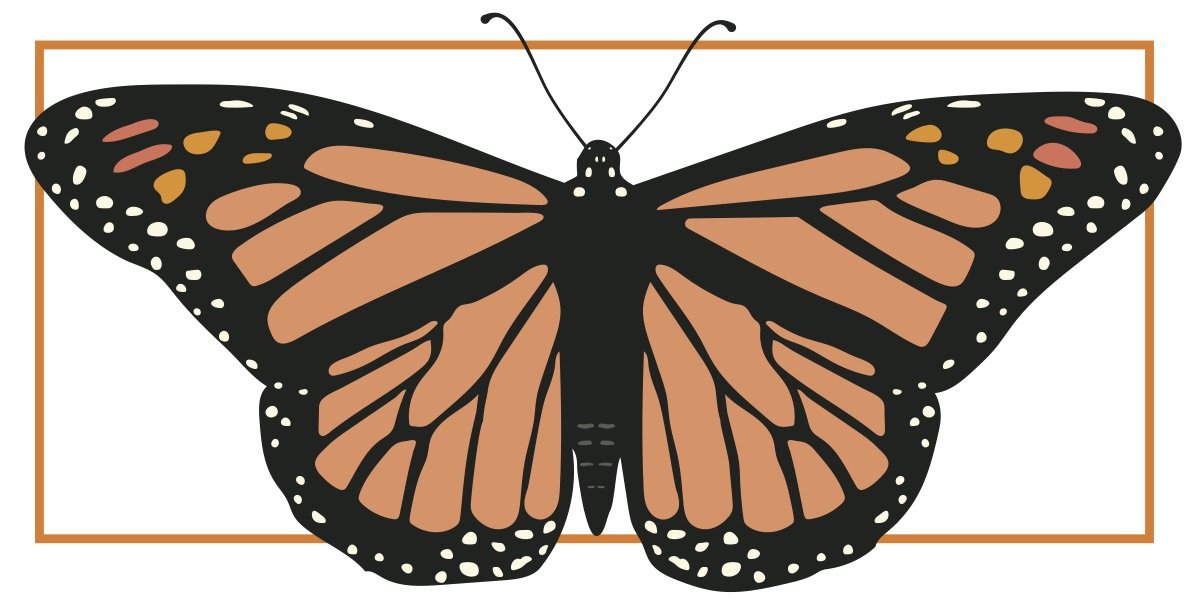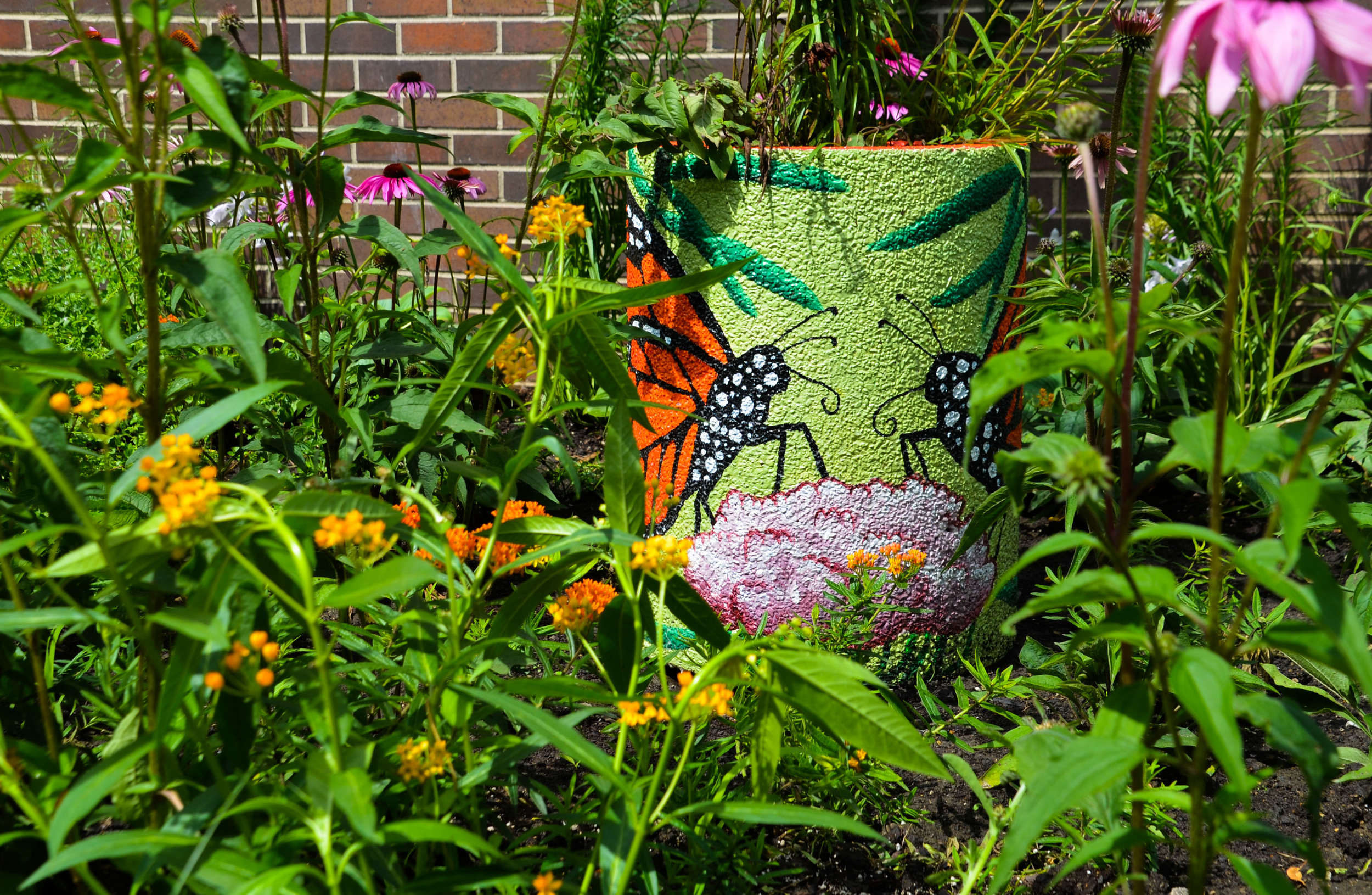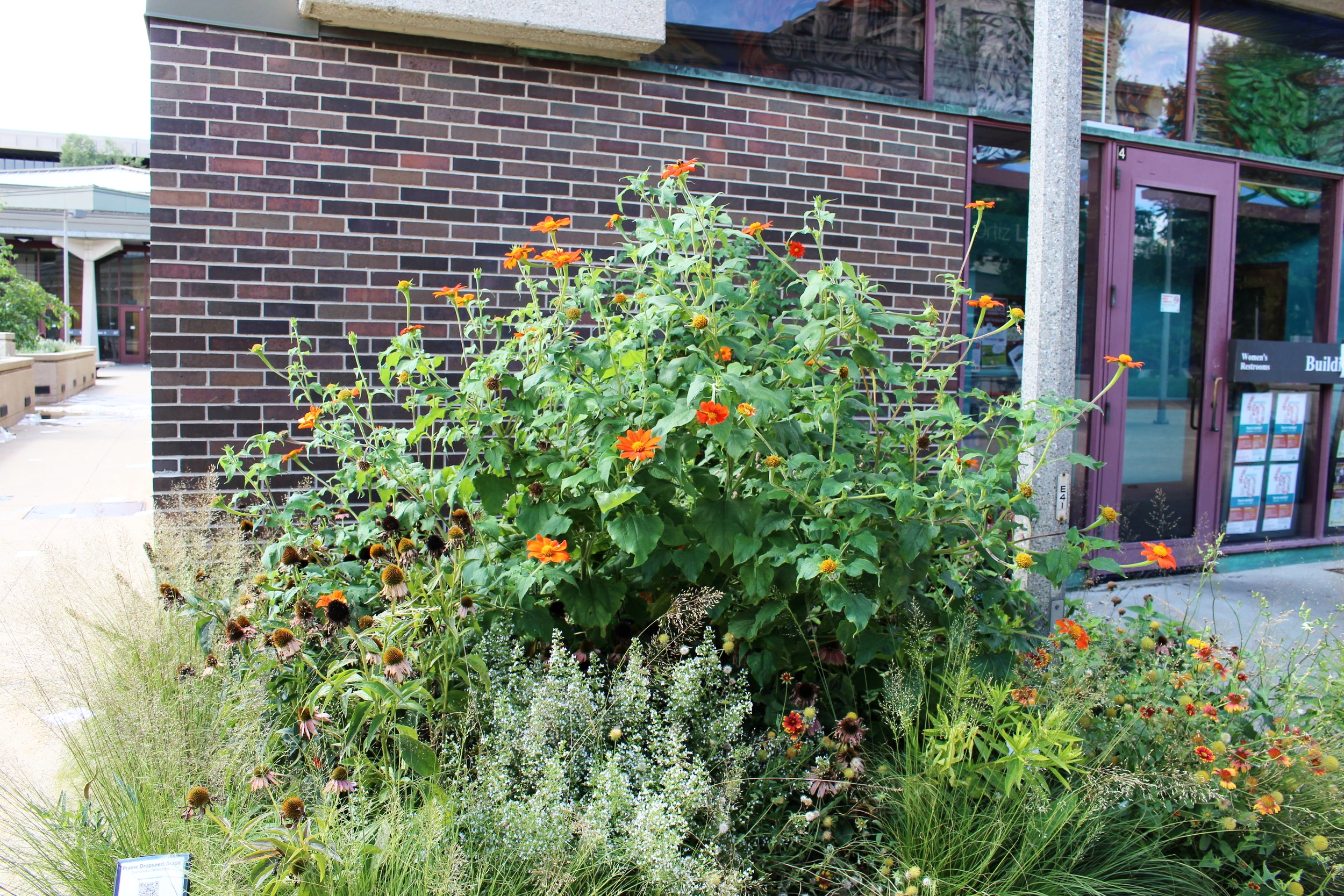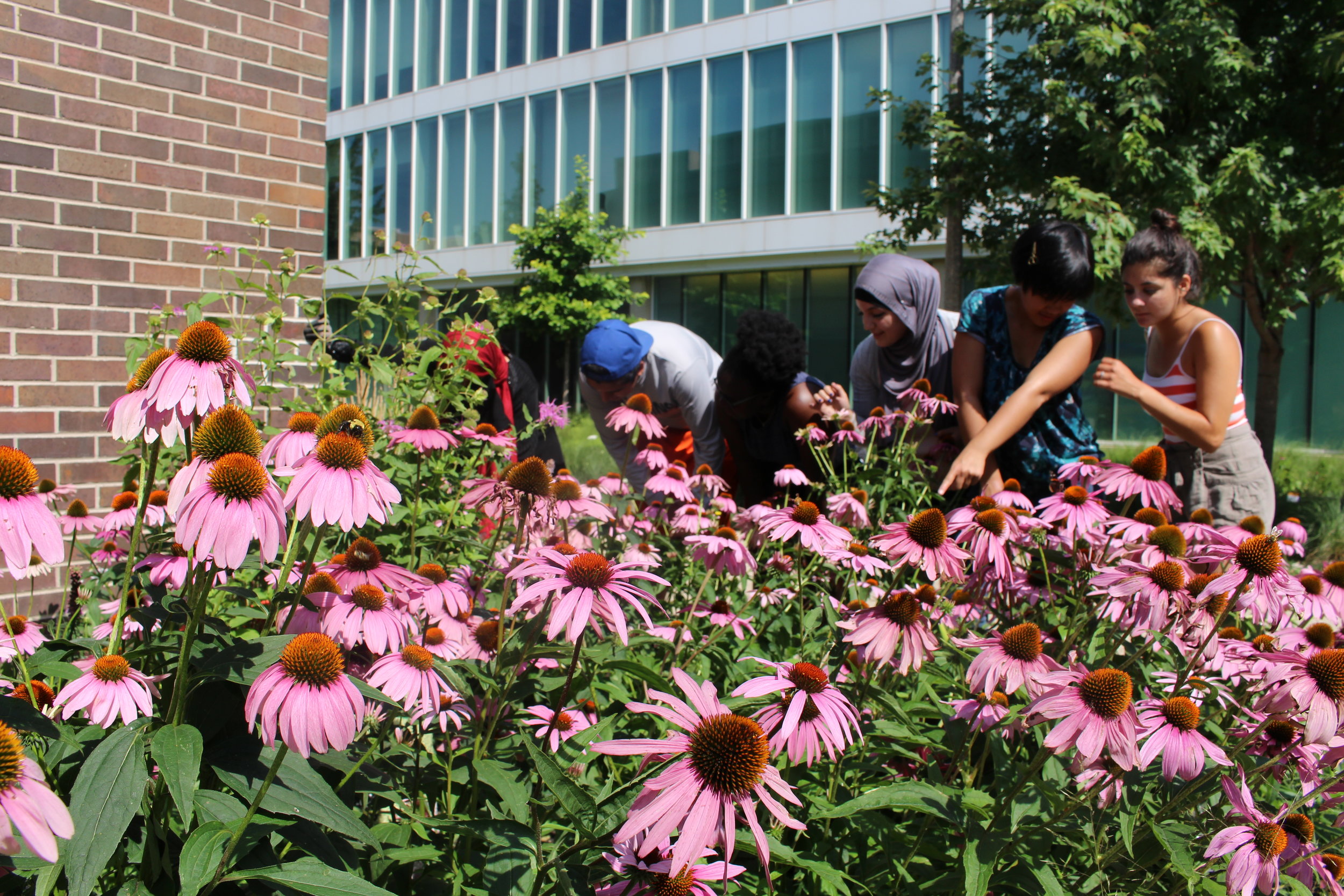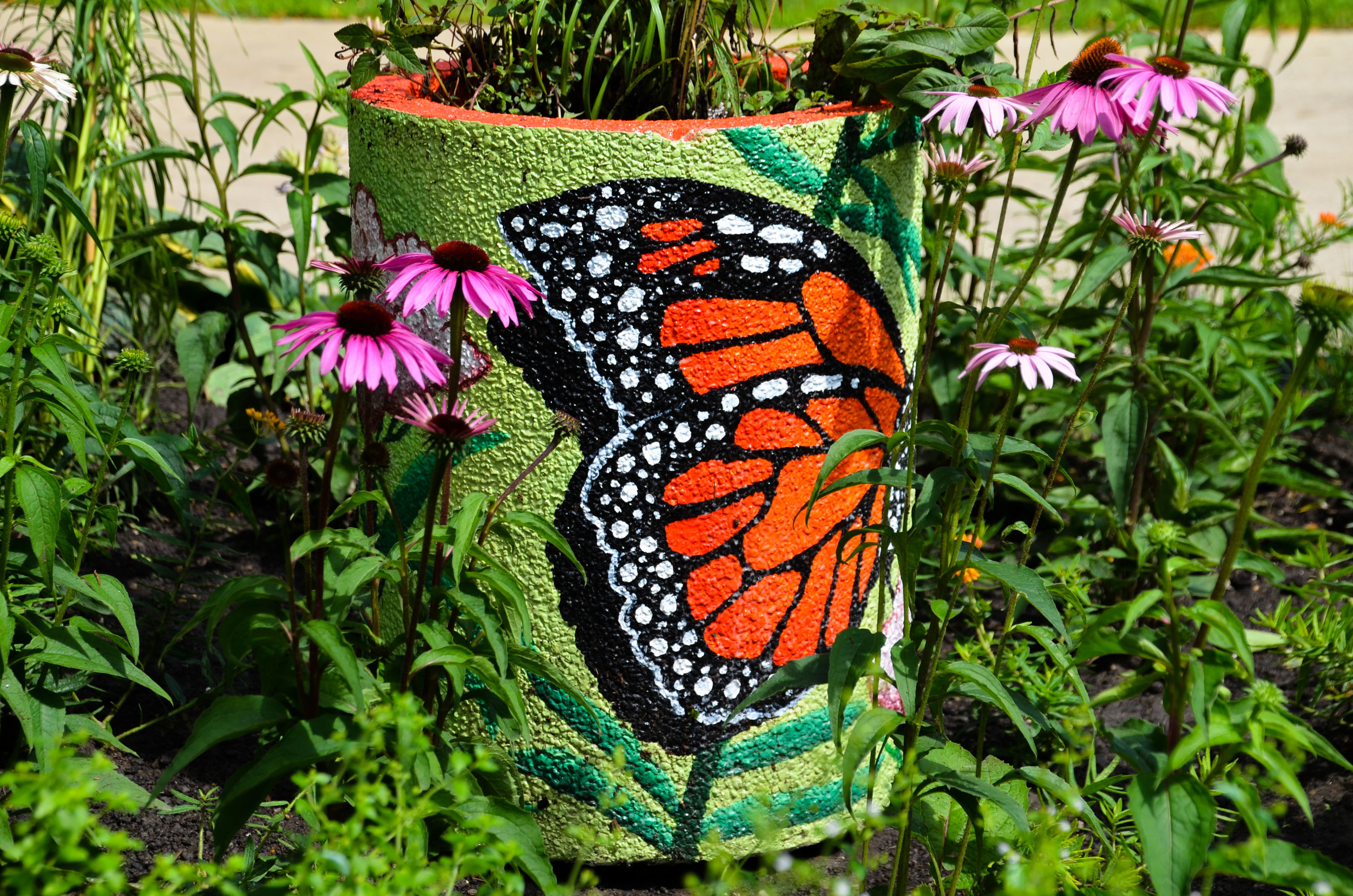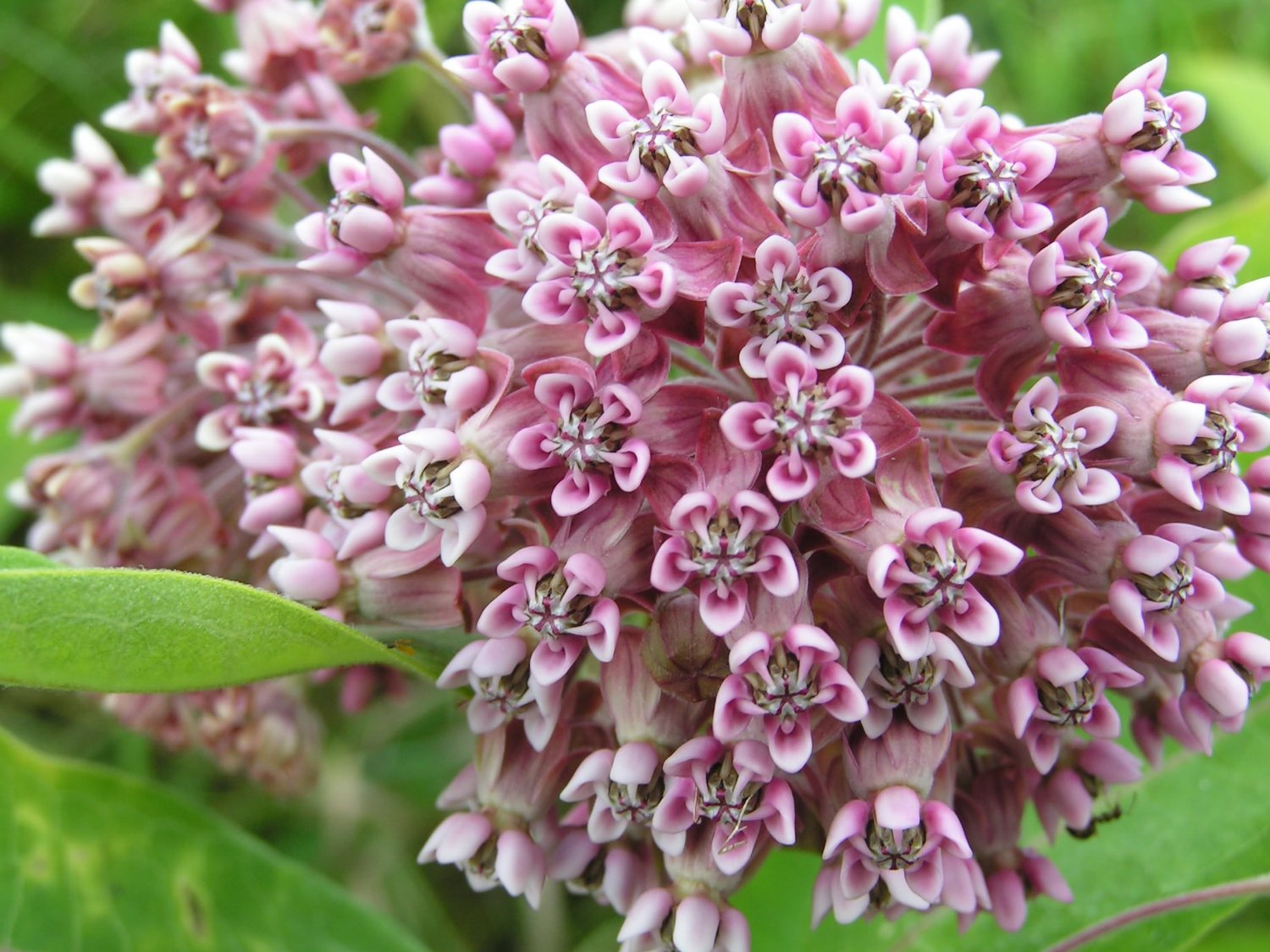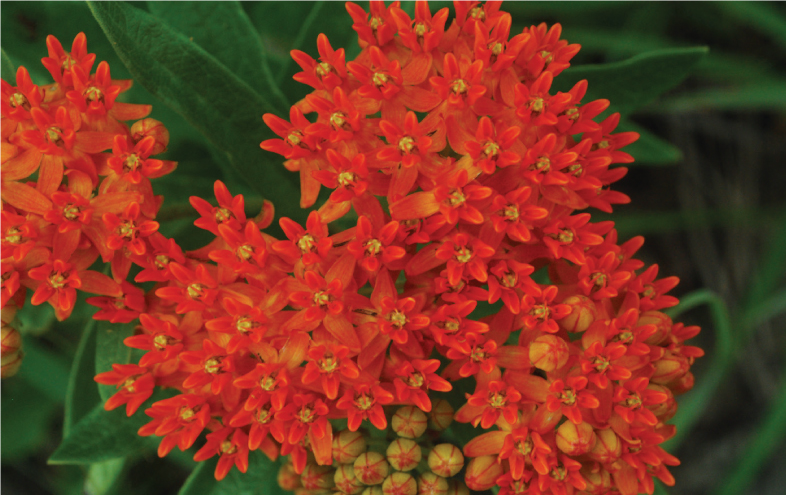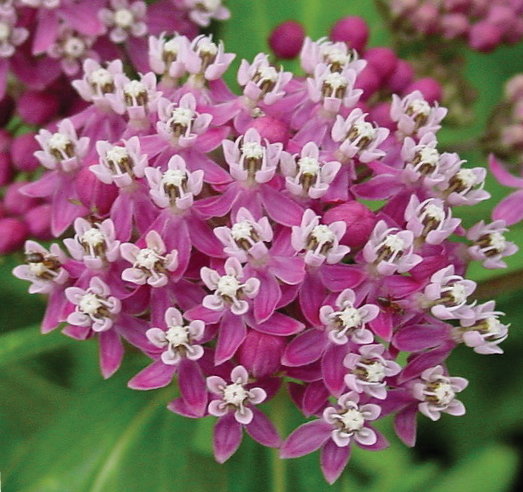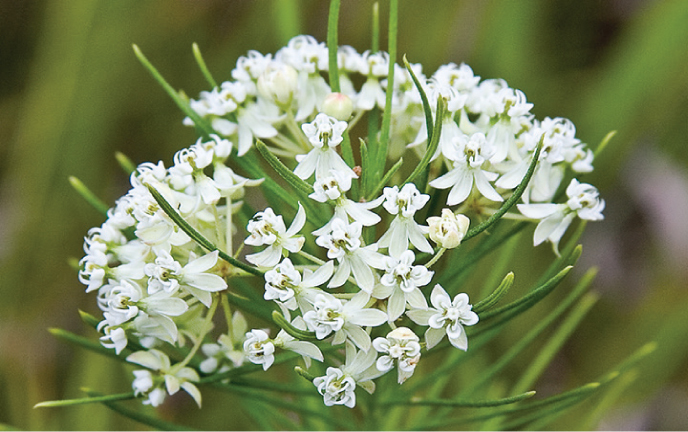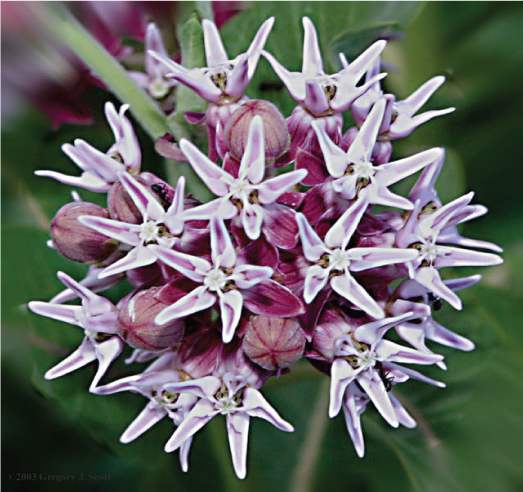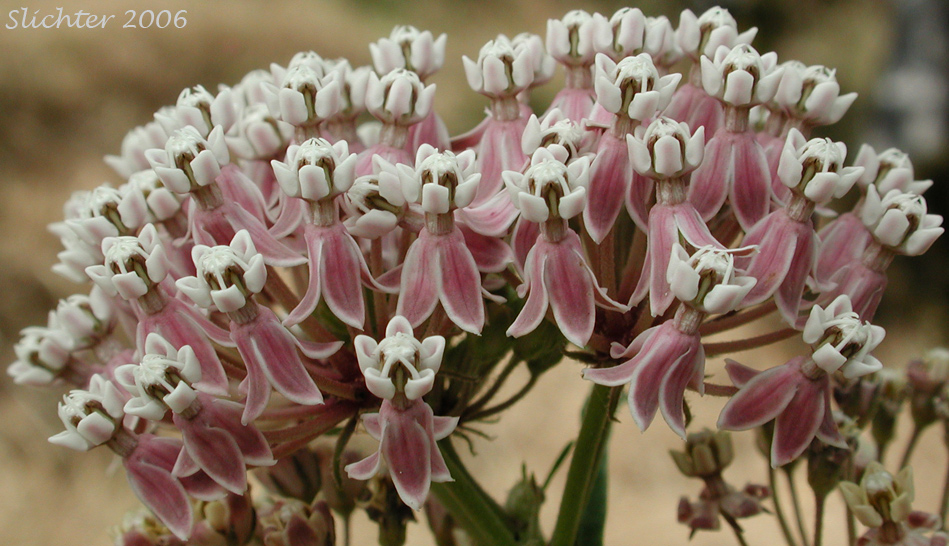Located in front of the UIC Latino Cultural Center, this habitat was created by the UIC Heritage Garden Interns in 2015 in response to a natural crisis: an 80% drop in the Monarch butterfly population from their historic average over the past 20 years. One major factor in this decline is the destruction of the Monarch butterfly habitat. Caterpillars feed exclusively on milkweed, which has become less available due to pesticides and prairie destruction. Planting a garden can provide food and shelter for pollinators like birds, bats, and of course, butterflies. These beautiful insects need support so they can continue to migrate across the continent each year. The Monarch serves as a symbol of immigration for the Latino community, as it moves freely across North American borders, representing beauty, resilience, and natural survival. In addition to inspiring environmental and climate action, this habitat can help spark conversations about cultural understanding and social justice.
This year, due to a variety of factors , there was an increase in the eastern monarch population. Read the updated report for 2018/2019 by clicking here or going to the following web:
Monarch Kit and Guide
In order to engage diverse audiences on pollinator conservation, the information found on this page, plus additional information, was consolidated into a Monarch Guide and Kit. Materials for these are available in Spanish and English and can be accessed through the following links.
Located in front of the Latino Cultural Center (East Wall), UIC. 803 S. Morgan St., Lecture Center B2, North & East Wall, Chicago, IL, 60607
Spring/Summer Monarch Migration Route
Establishing a Monarch Butterfly Habitat
Size of Planting Area: at least 100 square feet Exposure: at least 6 hours of sun per day Drainage and Soil
Types: low-clay soil with good drainage is ideal Shelter: plants should be close together and spaced, but not overcrowded
Milkweed Plants: at least 10 individual milkweed (multiple species is recommended)
Nectar Plants: at least 4 annual, biennial, or perennial nectar plants that will provide nectar for the butterflies throughout the seasons
Management: water and weed regularly (others: mulch, fertilize, or amend the soil; remove dead stalks; eliminate the use of insecticide; remove invasive plants, and etcetera)
Different Types of Milkweed
Milkweed plants serve as shelter and food for monarch larvae, which are caterpillars with yellow, black, and white bands. Female monarch butterflies lay their eggs underneath the leaves of milkweed plants, where it is safe from predators. Once the eggs hatch, the caterpillars feed solely on milkweed although the plant’s “milk” or white latex is acidic and somewhat poisonous to many animals. Since the monarch caterpillars feed on milkweed, they absorb some of the plant’s acidic and poisonous substances. The substances are stored in their bodies throughout their life. Therefore, the monarchs taste awful to many of their predators.
Different Types of Nectar Plants
Nectar plants should be grown in warm and sunny areas that should be protected from wind by large shrubs, hedge rows, or fences. Nectar plants provide nectar for pollinators such as bees and butterflies. Nectar is a kind of sugar water that contains amino acids, proteins, organic acids, and vitamins. It serves as a fuel and is the only source of energy for pollinators. Butterflies need sugar to fuel their search for mates and egg-laying sites. Without nectars, pollinators cannot fly.
Indian Blanket (Gaillardia pulchella)
Purple Coneflower (Echinacea purpurea)
Joe Pye Weed (Eupatorium purpureum)
Scarlet Sage (Salvia coccinea)
Tithonia Torch, Mexican Sunflower (Tithonia)
Zinnia, Dahlia Mix (Zinnia elegans)
Blue Sage (Salvia farinacea)
Chia (Salvia columbariae)
Blazing Star (Liatris)
Bergamot or Bee Balm (Monarda fistulosa)
Maximilian Sunflower (Heliathus maximilanii)
Goldenrod (Solidago rigida, S. speciosa)
New England Aster (Aste novae-angliae)
Butterfly Food
Milkweed ( Asclepias)
Yarrow (Ahillea)
Black eyed susan ( Rudbeckia)
Purple coneflower ( Echinacea)
Mexican Sunflower (Tithonia)
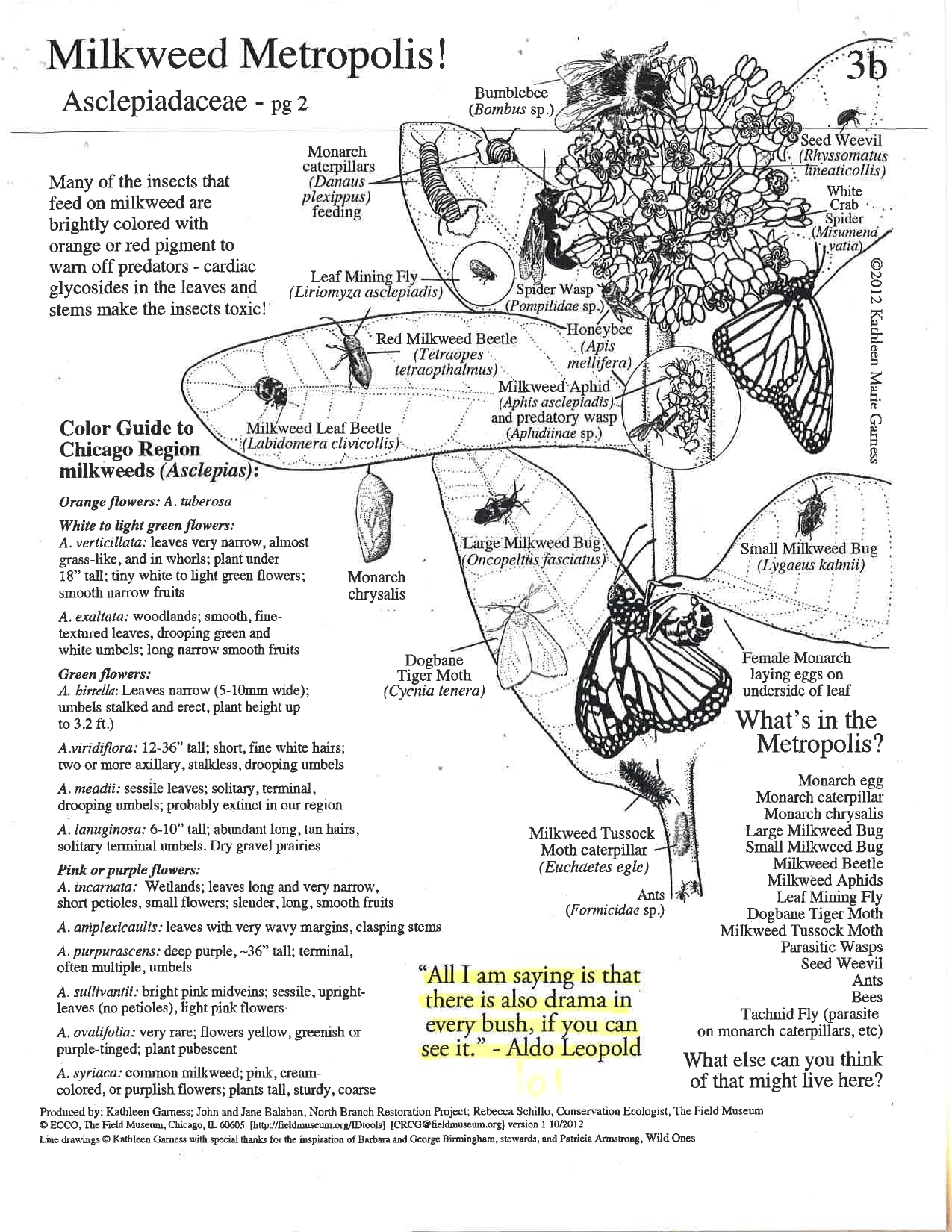
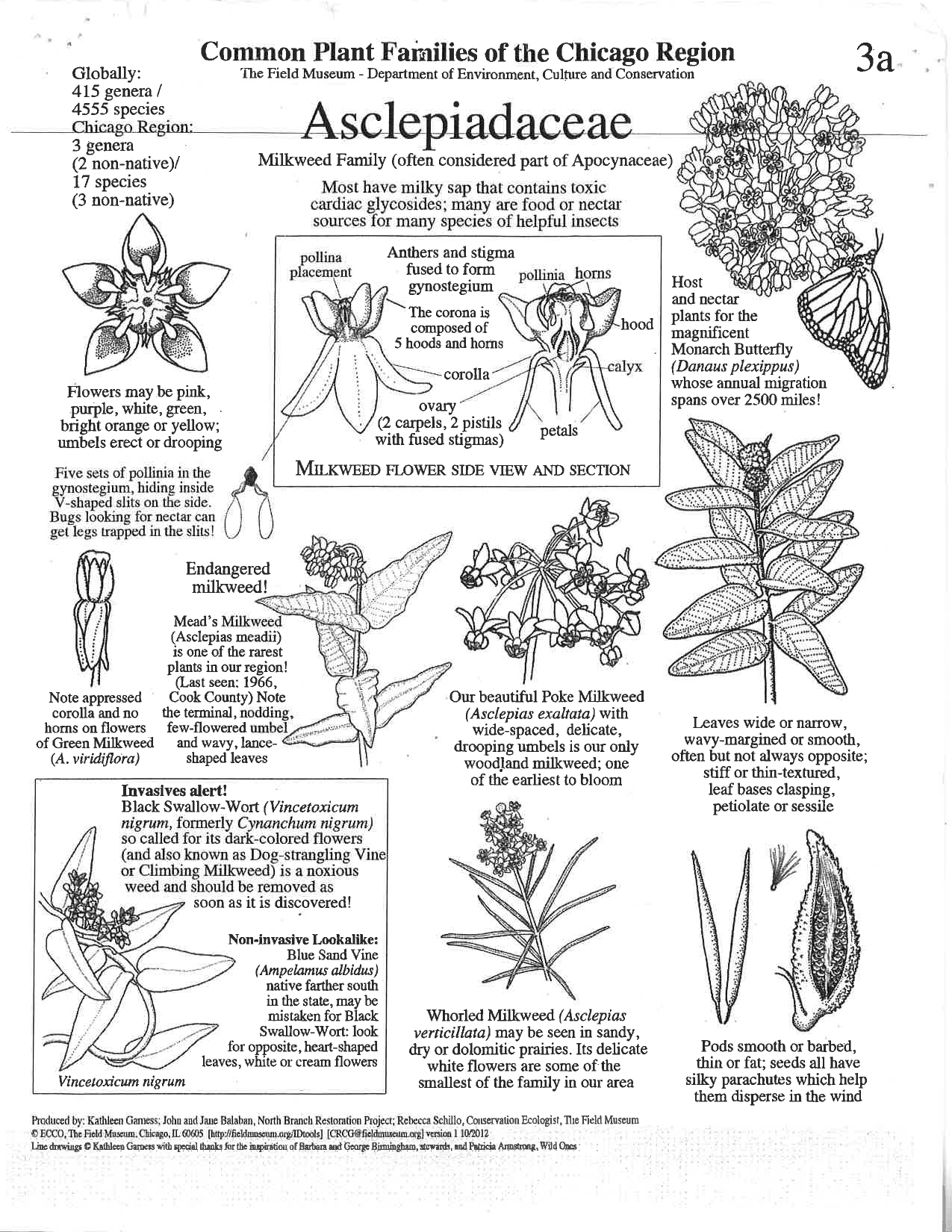
Historias Monarca (Monarch Stories) collects stories from Mexican communities in Chicago about their connections to Monarch butterflies, including conservation practices adapted from Mexico or learned in Chicago, cultural meanings of the Monarch in relation to homeland and the Midwest, and its symbolism for social and environmental justice. Historias Monarca is a storytelling project of the UIC Latino Cultural Center in partnership with UIC Heritage Garden, Enlace Chicago, and Yollocalli Arts Reach with support from the USDA Forest Service International Programs.


